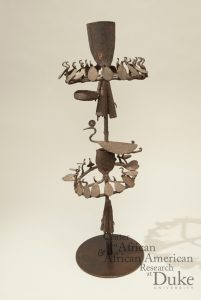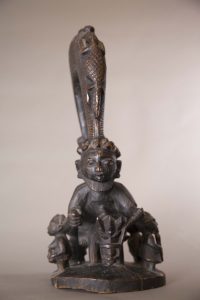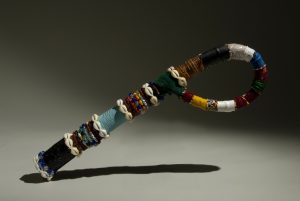Dan DellaPasqua
Bibliography of sources which research spirit possession among African Diaspora religions.
Matory, J. L. Black Atlantic Religion: Tradition, Transnationalism, and Matriarchy in the Afro- Brazilian Candomblé. N.p.: Princeton University Press, 2005.
I discovered “Black Atlantic Religion: Tradition, Transnationalism, and Matriarchy in the Afro-Brazilian Candomblé while using the keyword spirit possession on google scholar. This source is heavily illustrates Afro-Brazilian Candomblé by examining its routes and how transnationalism effected this religion as a whole. However, this source does outline many practices in Diaspora religion and the underlying mechanisms and intentions behind those practice .
This source is from an ethnographic point of view. On this note, the information is neutral and the content is research based. The tone of the author is anthropologic, using cultural relativism to talk about the culture in a way which aims to depict the true nature of the religion from a natives viewpoint.
Matory, J. L. Rival Empires: Islam and the Religions of Spirit Possession among the Ọ̀yọ́- Yorùbá. N.p.: Wiley on behalf of the American Anthropological Association, 1994.
I found this source using the keyword spirit possession within the Bailey Howe Library research database. This source directly examines spirit possession among Yoruba people, with a specific focus on possession among women. This source outlines motives behind possession, and how this helps to shape character and identity.
The source is written by Matory, an accomplished anthropologist. Matory writes strictly research based books where most of the information is from credible sources or first hand experience. With this being said, the information published is not biased it is ethnographic research aimed to published research regarding spirit possession within a broader religion.
Matory, J. L. Sex and the empire that is no more : gender and the politics of metaphor in Oyo Yoruba religion. Minneapolis: University of Minnesota Press, 1994.
This sources was recommended to me by Doctor Vicki Brennan, a professor at the University of Vermont. In this source Matory makes a case for the existence of “meta-tropes” of gender in Yoruba spirit possession, illustrating these practices are deeply embedded in Oyo politics. Matory explains possession within the social and political context of local government, as in the case of traditional Songo and Yemoja possession in Oyo Yoruba religion. While doing this Matory broadcasts a community’s negotiation of personal power and the metaphors of gender among priests and priestesses.
Matory Writes from a non biased view point, providing factual information with wise anecdotes and metaphors to help understand difficult ideas which are foreign to our culture. Matory writes and researches with the intention of understanding, therefore the information published is accurate not only factually, but to the culture being researched as well.




 The ibiri, is a scepter-like object carried by the orixa of dance, death, disease and mud; Nanã. Nanã is an orixa of the Brazilian practice of Candomble. The ibiri was said to have been for with Nanã, in the placenta, and the staff itself grew as Nanã aged. However, the staff was placed into the earth, and Nanã was temporarily seperated from it. Until, her son Omolú had found it and brought it back to his mother, and this is what the word ibiri is translated into “Son-found-it- and brought-back-to-me” as found on page 71 in our textbook. The ibiri, is a twin scepter, to the xaxará, the scepter had by Omolú, god of pestilence, and her son. The ibiri is made of a gathered bunch of the ribs of palm fronds, around which is an intricately interwoven net of woven African straw, and adorned with various colored swatches, especially of the colors blue and white, and cowry shells. The colors of blue and white are especially associated with Nanã. The ibiri, is a symbol to the orixa, of when she carried her son in her arms as an infant.
The ibiri, is a scepter-like object carried by the orixa of dance, death, disease and mud; Nanã. Nanã is an orixa of the Brazilian practice of Candomble. The ibiri was said to have been for with Nanã, in the placenta, and the staff itself grew as Nanã aged. However, the staff was placed into the earth, and Nanã was temporarily seperated from it. Until, her son Omolú had found it and brought it back to his mother, and this is what the word ibiri is translated into “Son-found-it- and brought-back-to-me” as found on page 71 in our textbook. The ibiri, is a twin scepter, to the xaxará, the scepter had by Omolú, god of pestilence, and her son. The ibiri is made of a gathered bunch of the ribs of palm fronds, around which is an intricately interwoven net of woven African straw, and adorned with various colored swatches, especially of the colors blue and white, and cowry shells. The colors of blue and white are especially associated with Nanã. The ibiri, is a symbol to the orixa, of when she carried her son in her arms as an infant.